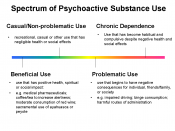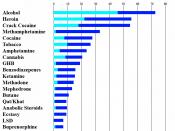Drug and Alcohol Testing
Introduction
Organizations use drug and alcohol testing to determine whether an employee (or prospective employee) is under the influence of alcohol or specific drugs. The drugs included in the test are illegal drugs such as cocaine, marijuana, PCP, and methamphetamines and commonly abused legal drugs such amphetamines, barbiturates, and opiates.
Drug and alcohol tests are also used to confirm that employees are in compliance with organizational substance abuse policies. Many organizations are drug-free workplaces. They have policies and programs that prohibit drug and alcohol use in the workplace. Testing is used to ensure compliance with their policy.
The primary reasons employers use testing are safety and productivity. A variety of statistics connect employee alcohol and drug use with higher absenteeism, lower productivity, higher medical insurance claims, and increased frequency of on-the-job accidents and injuries. Evidence also connects increased employee theft, property damage, and security issues to workplace drug use.
All of these represent significant costs to organizations that can be reduced by preventing drug and alcohol abuse among employees.
There are legal reasons to conduct drug and alcohol testing. Many employers are required under state or federal regulations to have policies prohibiting drug use among employees. These laws are often justified under the umbrella of public safety. For example, truck drivers and railroad workers are covered by Department of Transportation regulations that require drug and alcohol testing.
Employers who choose to implement a drug and alcohol testing program typically analyze the costs and benefits of the program. Employers argue that the benefits of preventing drug and alcohol abuse significantly outweigh the costs of a testing program. Preventing one serious accident is usually enough to justify the cost of the program. In the case of government-mandated testing, the cost of testing is considered a normal cost of...


